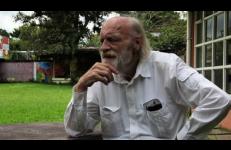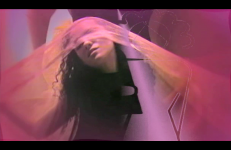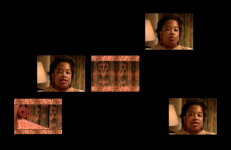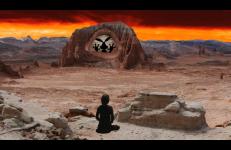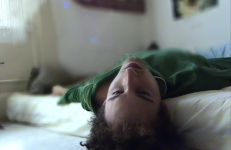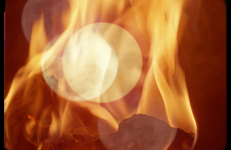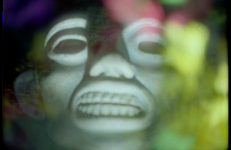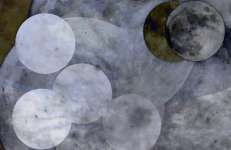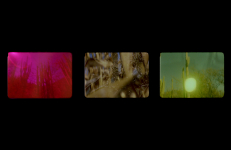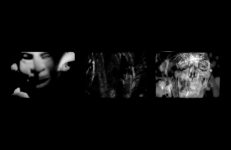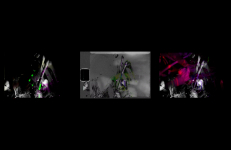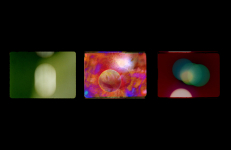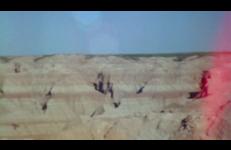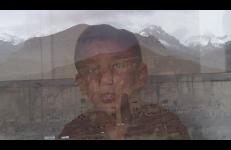The violent overreaction to 9/11 and to the revolutions of the 1960s cannot be explained only with fear and politics. Franz Hinkelammert, a German-born liberation theologian, economist and philosopher, brings religion front and center to the discussion in a unique way. The emptiness and senselessness felt by those at the margins of a free-market utopian ideology has been filled by an extreme millenarian Christianity and other religious fundamentalisms that justify murder and torture as preemptive self-defense.
Religion/Spirituality
Taste the delicious colors of "SWEET NOTHINGS" and observe the dice of desire being tossed on a gambler’s bed like yesterday’s candy. See tomorrow’s chocolate bunny melt into a brown puddle and feel a sticky, rainbow colored lolly-pop thats stuck to six feet of skin that secrets pent up passions... It’s all here for you to eat and is guaranteed to fatten your eyes!!
A documentation of a performance/installation. Guillermo Gómez-Peña and Roberto Sifuentes created a fictional religion based on inter-cultural confessions. Exhibiting themselves in Plexiglas boxes as "end-of-the-century saints", the two performers hear the confessions of audience members willing to reveal their intercultural fears and desires to the saints.
A documentation of a performance/installation. Guillermo Gómez-Peña and Roberto Sifuentes created a fictional religion based on inter-cultural confessions. Exhibiting themselves in Plexiglas boxes as "end-of-the-century saints", the two performers hear the confessions of audience members willing to reveal their intercultural fears and desires to the saints.
In the Bible, Abraham buys a cave from Ephron the Hittite as a burial place for his wife Sarah. The Cave of the Patriarchs, as it has come to be known, became the final resting place not only for Sarah, but for Abraham and their descendants as well. In Jewish mystical sources the cave is also a passageway back to the Garden of Eden. It is said that Adam and Eve are also buried there.
In the Bible, Abraham buys a cave from Ephron the Hittite as a burial place for his wife Sarah. The Cave of the Patriarchs, as it has come to be known, became the final resting place not only for Sarah, but for Abraham and their descendants as well. In Jewish mystical sources the cave is also a passageway back to the Garden of Eden. It is said that Adam and Eve are also buried there.
A collage piece. Oppositions of agony and ecstasy are explored. Morticia trims yet another rose stem, while Bugs Bunny takes up Zen. Guilt-wracked, a nun tries furtively to cleans herself of imagined sin. Or attain spiritual release. Various divas flail to no avail. Lips, lipstick, frozen lips. Shakuhachi music by Chris Moran sets the mood, when there isn’t a thunderstorm raging.
Behind the yellow gates is a realm that sparkles like diamonds under a desert sun. It is a realm ablaze with outrageous flowers, fragrant and poisonous… A realm populated by bare skin scared by flashing swords and marked with stone idols… It is that subterranean consciousness; a land of Mind-in-Time that sends unholy incense up toward Heaven.
These are the dancing bodies in an agitated rapture: prelude to trance, invocation of the gods, consecration of intermittence. Here our point of view sparkles under the spell and trance of things gathered, fallen, yielding, pluvial, Mesoamerican wind, goddess breath, breeze of sticks. percussive woods.
Time Bomb tells the story of a young girl's experience at a Baptist retreat, where she is called upon to accept Jesus into her life after a coercive game of terror. This piece explores memory, the power of crowds, rituals of conversion, and the isolation of a child lost in the world of adults. Fear and family values motivate action and create an empty arena for escape. Visually, Time Bomb proceeds through a sequence of images that figure the "light" of memory as simultaneously revelatory and obscuring, constructive and destructive.
Time Bomb tells the story of a young girl's experience at a Baptist retreat, where she is called upon to accept Jesus into her life after a coercive game of terror. This piece explores memory, the power of crowds, rituals of conversion, and the isolation of a child lost in the world of adults. Fear and family values motivate action and create an empty arena for escape. Visually, Time Bomb proceeds through a sequence of images that figure the "light" of memory as simultaneously revelatory and obscuring, constructive and destructive.
Tlecáxitl is the sacred furnace where the new fire begins. This is the place where the sun, the moon and fire coincide in their cosmic dance to unleash vital irradiation. Part of Tonalli.
“Drawing on the ancient Nahuatl concept of the animating soul or life force, Tonalli engages the ritualistic powers of the cinema, summoning fire, flowers, and many moons into a frenetic and mesmerizing in-camera collage. Here, amid thickly swirling images and textured abstractions, the gods of creation and fertility manifest, dissolving into iridescent colors and dense, corporeal rhythms.” NYFF59
Tortillas are an ancestral and sacred food, our transmuted corn. The circular nourishment that represents the luminous and colorful side of the moon on which our life is nourished. This is the cosmic dance of the colorful Tortilla with the hyperkinetic fire that sustain our bodies and souls. Part of the Lunar Films series.
The projection and screens in this installation are access points meant to connect the present to an ancestral past. Evoking the ritualism of Aztec cosmology, this experience recalls lumbreras – circular excavation holes in archeological sites, such as the recently found Tzompantli (skulls ceremonial rack) at the Templo Mayor in Tenochtitlan (Mexico City). The use of obsidian crystal as a nuclear filter in the chamber is also essential.
The projection and screens in this installation are access points meant to connect the present to an ancestral past. Evoking the ritualism of Aztec cosmology, this experience recalls lumbreras – circular excavation holes in archeological sites, such as the recently found Tzompantli (skulls ceremonial rack) at the Templo Mayor in Tenochtitlan (Mexico City). The use of obsidian crystal as a nuclear filter in the chamber is also essential.
The projection and screens in this installation are access points meant to connect the present to an ancestral past. Evoking the ritualism of Aztec cosmology, this experience recalls lumbreras – circular excavation holes in archeological sites, such as the recently found Tzompantli (skulls ceremonial rack) at the Templo Mayor in Tenochtitlan (Mexico City). The use of obsidian crystal as a nuclear filter in the chamber is also essential.
The projection and screens in this installation are access points meant to connect the present to an ancestral past. Evoking the ritualism of Aztec cosmology, this experience recalls lumbreras – circular excavation holes in archeological sites, such as the recently found Tzompantli (skulls ceremonial rack) at the Templo Mayor in Tenochtitlan (Mexico City). The use of obsidian crystal as a nuclear filter in the chamber is also essential.
“Trypps #7 (Badlands) charts, through an intimate long-take, a young woman's LSD trip in the Badlands National Park, before descending into a psychedelic, formal abstraction of the expansive desert landscape. Concerned with notions of the romantic sublime, phenomenological experience, and secular spiritualism, the work continues Russell's unique investigation into the possibilities of cinema as a site for transcendence.”
-- Michael Green, Museum of Contemporary Art, Chicago
Amidst growing discussions on the headscarf issue, the President of Turkey was holding the annual Republic Day Ball at the Presidential Palace. For the reception he sent one-person invitations to the members of the Parliament whose majority was held by the Islamic Democrats. This was his strategy to prevent their wives, who would naturally wear headscarves, from attending the night. I was outraged by this conservative secularism and wanted to express my personal protest, embodying the stress on the contemporary Islamic body. --Köken Ergun
Out of the mouths of rural boys, finding the incomparable Mulla Nasrudin in Afghanistan.
On February 10th, 2005, Lynne Stewart was convicted of providing material support for a terrorist conspiracy. She is the first lawyer to be convicted of aiding terrorism in the United States. Stewart was convicted on charges of conspiracy and providing material support to terrorists in 2005, and sentenced to 28 months in prison. Her felony conviction led to her being automatically disbarred. She was re-sentenced on July 15th, 2010, to ten years in prison in light of her perjury at trial.
A multiple award winner, this experimental tape explores the psychological ramifications of a woman growing up under orthodox Islamic law. Resisting traditional definitions of a woman’s role in society as first and foremost a dutiful daughter or wife, Nanji struggles to find a space amidst the web of restrictive familial and societal conventions.




